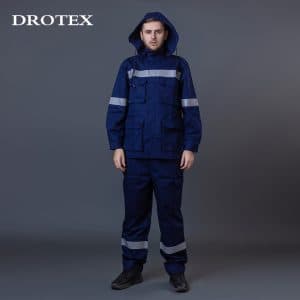
In the split second of working with electric sparks and flames, safety cannot rely on luck. A qualified flame-retardant welding shirt is one of the most important life lines for welders when facing electric arcs and sparks. But how to determine if a welding shirt is truly safe? What do the NFPA 70E standard and ATPV value on the label represent? This article will comprehensively interpret these key indicators for you, helping you make the wisest safety choice.

Ordinary clothing, when exposed to high-temperature sparks or electric arc explosions, will quickly catch fire, melt and stick to the skin, causing severe secondary burns. Professional flame-resistant (FR) welding shirts are made of specially treated fabric (such as flame-resistant cotton, Nomex®, Protex®, etc.), and their design goal is to not continue burning when exposed to high temperatures, but to carbonize and form a protective layer, isolating heat and providing the wearer with precious escape or response time, greatly reducing the risk of burns.
NFPA 70E (the American National Fire Protection Association Standard “Electrical Safety Standards for the Workplace”) is an authoritative international standard for personal protective equipment (PPE) in arc flash environments. It is not an independent clothing standard, but a complete set of safety operation guidelines that specify the level requirements of protective equipment to be equipped for different levels of arc hazards.
In simple terms, NFPA 70E answers the question of “Under what dangerous circumstances should one wear clothing of what level of protection?” A welding shirt that complies with the NFPA 70E standard means that it has undergone rigorous testing and its protective performance is well-documented.
This is the core data for evaluating the protection level of arc-resistant clothing. It is usually measured in cal/cm² (calories per square centimeter) and represents the fabric’s ability to resist the invasion of arc heat.
ATPV (Arc Thermal Performance Value):
Arc Thermal Performance Value
EBT (Energy Breakopen Threshold):
Energy Breakdown Threshold
The correspondence between HRC (hazardous risk category) and ATPV
The NFPA 70E standard classifies arc hazards into several levels and specifies the minimum protective requirements for PPE for each level:
HRC grade Minimum required arc rating Examples of application scenarios (for reference only, an arc risk assessment is required to determine)
| HRC 1 | 4 cal/cm² | Low-voltage line work, tasks with a relatively low risk of electric arc |
| HRC 2 | 8 cal/cm² | Common electrical maintenance and equipment debugging operations |
| HRC 3 | 25 cal/cm² | Work on the distribution panel and other situations where high-energy arcs may occur |
| HRC 4 | 40 cal/cm² | High-risk electrical operations, such as maintenance of high-voltage equipment |
Please note: The main hazards of welding operations are sparks and molten metal, but the generated arc is also similar to an electrical arc. The type of shirt to be chosen should be determined based on the arc flash risk assessment conducted in the workplace, rather than choosing the highest level (because higher protection often means heavier fabric and poorer breathability).
Understanding NFPA 70E and ATPV values means that you shift from “believing in brand promotion” to “trust in scientific data”. When choosing welding protective clothing, be sure to check the safety level label of the product and select the one with an ATPV value that matches the risk assessment results of your specific working environment.
If you are looking for a welding shirt that offers reliable protection, excellent comfort and durability, you might want to take a look at the products of Drosafety. Drosafety strictly adheres to international safety standards and its product line covers various protection levels and material options, dedicated to providing solid and comfortable safety guarantees for every artisan working in the presence of sparks.